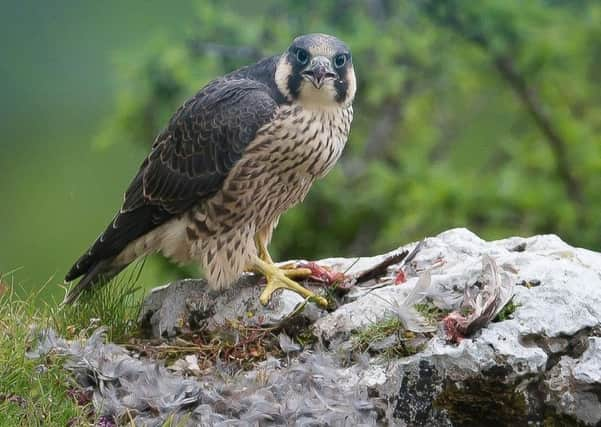Country & Coast: Why Wakefield's raptors aren't universally popular


A pair of the UK’s most charismatic raptor has nested high on Wakefield Cathedral since 2015, and the birds are currently incubating four eggs on a ledge above one of the main shopping streets. They have become a big hit on social media, with more than 1,600 Twitter users following them since the first egg was laid on March 25. A live webcam provided by Wakefield Naturalists’ Society monitors all their comings and goings.
Meanwhile, peregrines have made their nest at Sheffield University’s St George’s Church. Further urban nests are in Nottingham, Derby, Brighton, Exeter, Chichester, Aylesbury and London.
Advertisement
Hide AdAdvertisement
Hide AdFor conservationists it is a welcome development. A century ago peregrines were badly persecuted on shooting estates, and when they moved to farmland they fell prey to the now-banned pesticide DDT, which poisoned them and made eggs infertile. A pair managed to breed on the cliffs at Bempton in the early 1950s, where the large numbers of nesting seabirds provided easy pickings. But the peregrine’s fortunes were at their lowest in the 1970s when nest raiders stole the highly-prized chicks for falconry.
It was then that the RSPB began mounting a watch at every known nest and I took part in the 24-hour guard at Yorkshire’s only one, on a secluded Dentdale crag. These days peregrines are doing well, and more than 1,500 pairs breed in the UK. The best-known nest in Yorkshire is at Malham Cove, where there is a public viewing area.
The phenomenon of urban peregrines is not entirely new - they were recorded nesting on Salisbury Cathedral up to 1953 - but the modern trend of more birds nesting in city centres has ornithologists puzzling over the cause. An obvious reason is the ready supply of food in the shape of jackdaws and feral pigeons which also nest on high buildings. But such prey has always been there and doesn’t explain why more peregrines have become “urban adapters” in the past decade. One explanation suggested by researchers is that chicks which have been reared in urban areas are imprinted with that habitat, because of its safety from persecution and abundance of prey, and are themselves more likely to seek built-up areas for breeding than their ancestors.
Not everyone loves this new twist in the peregrine story, however, since peregrines don’t care whether their next meal is a pigeon pecking around on the street below or a champion racing pigeon. As one of the sport’s leaders commented on the Wakefield peregrine website: “Grown men cry because of the amount of pigeons that they are losing, and then decide to leave the sport for good. All I am asking is to leave these birds where they belong, in the countryside.”
Follow @WfldPeregrines on Twitter for updates on Wakefield’s peregrines.